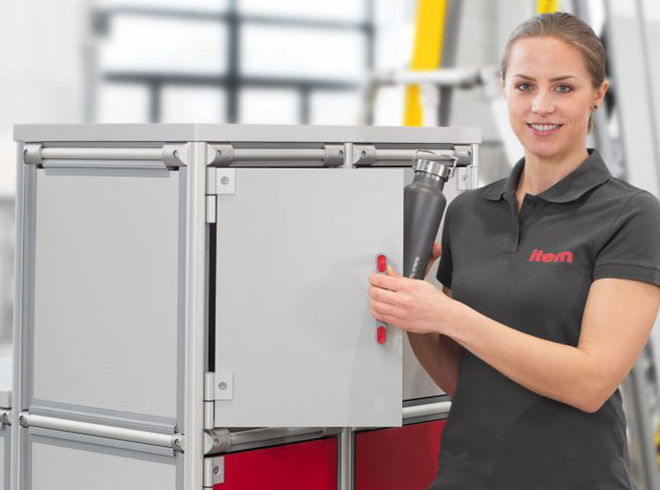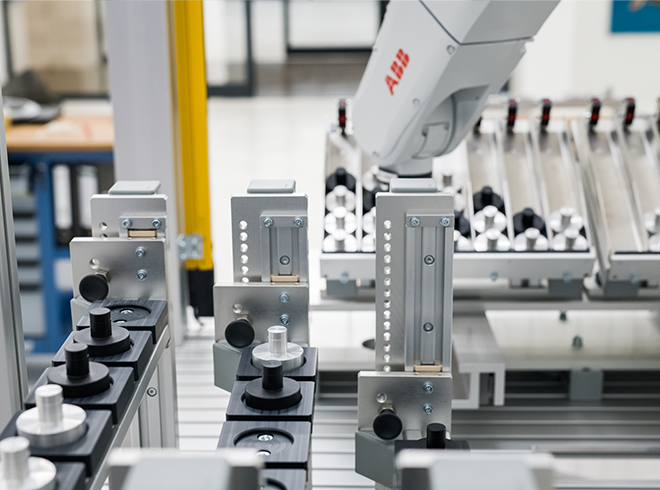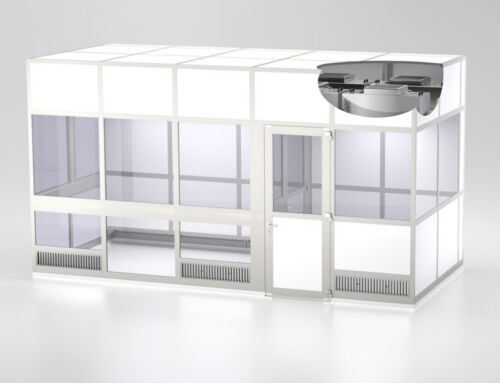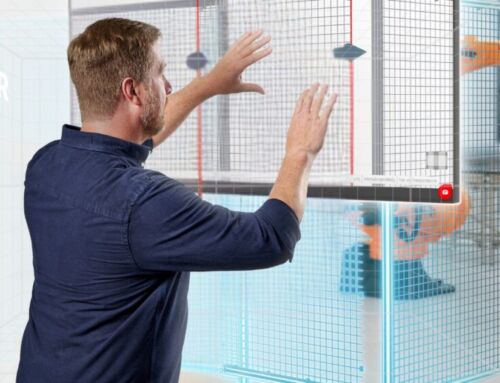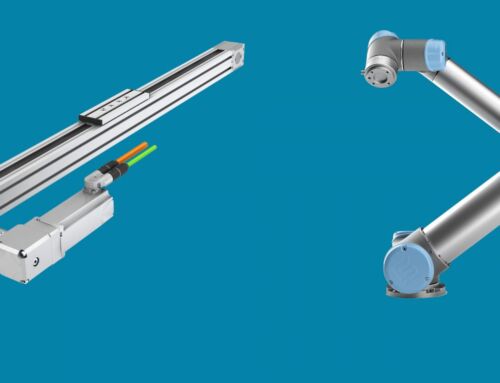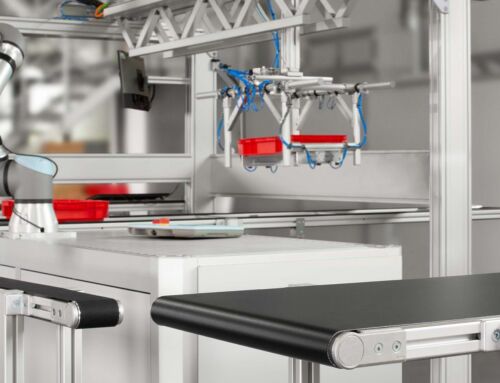Cleverly combining robotics with linear technology brings huge advantages for companies – maximizing potential savings and boosting process efficiency.
In industry, pneumatic drives have largely been replaced by their electric equivalents. Due to the considerable energy and maintenance costs involved, as well as the drawbacks in terms of reliability and noise, pneumatic systems now only play a role in certain specialist fields. Companies looking to automate processes can turn to linear technology, which offers a reliable, cost-effective and future-focused solution. Robots, meanwhile, offer the opportunity to automate even more flexible motion sequences and are being used for a growing number of tasks in material handling and production lines.
Linear technology is used whenever production processes call for quick, precise movements along a route and high positioning accuracy, or whenever heavy loads need to be moved. In addition to this, robots take care of a range of tasks on production lines and in material handling operations. Versatile and able to move around freely, they are perfectly suited to various different activities. In terms of robustness, speed and precision, however, linear technology delivers more impressive results – while also making commissioning easier and more cost-effective.
Linear Technology is Extremely Versatile
Linear technology has become indispensable in process automation. The underlying concept is based on movable carriages that travel along a linear route on a support profile. Yet linear technology can do so much more than that. By combining multiple linear units, companies can implement numerous projects involving multidimensional movements, be they limited to a certain area or spanning all directions. Using linear technology from item, it is possible to create both single-axis linear units and 2D or 3D gantries. The global market leader in building kit systems for industrial applications offers a wide range of components to ensure different automation processes can be performed quickly and easily. In addition to various linear guides and carriages, as well as controllers and drives, the portfolio of this Solingen-based company also features pre-configured linear units and turnkey solutions.
A range of solutions for different applications
In production, single-axis linear units are often used to move tools along a route for the purpose of drilling holes or fixing screws into place, among other things. Such linear units can be used to make moving heavy loads easier, too. When it comes to more complicated applications, however, synchronized linear axes are the go-to option. The synchronization makes it possible to manufacture multi-axis systems, known as gantries, to implement multidimensional applications. In 2D gantries, printer heads, nozzles, sensors or scanners, for example, are guided across a single plane. XY tables help move to heavy tools and perform sorting or filling operations. Material and load testing, among other things, can be performed using a cantilever axis. Three-dimensional processes, such as stacking, palletizing and various sorting tasks, can also be achieved using linear technology components from item. Whether they have a single axis or are two or three dimensional, linear technology solutions support maximum positioning accuracy and rapid movements. Further advantages include straightforward commissioning, a long service life, low maintenance requirements and moderate investment costs.
Robots – Collaborative and Non-Collaborative
Linear technology makes implementing automated processes simple, yet compared to robots, linear technology systems have a very limited range. When it comes to robots, a distinction is drawn between collaborative and non-collaborative applications. Non-collaborative robots perform worksteps completely independently. Since they move around freely, they need to be fitted with protective casings or the area in which staff carry out their work needs to be fenced off. This type of robot is often used for welding work or for repetitive tasks in the production process. Their programming can be very expensive and time-consuming. Collaborative robots, also known as cobots, work together with humans. The machine is not intended to replace employees, but rather to support their capabilities and relieve them of arduous tasks. To prevent injury to employees, the robot is equipped with sensors that shut it down upon contact, meaning protective casings and enclosures are not required. “At the moment, many of these systems are still in the test phase,” explains Uwe Schmitz, product manager for machine automation at item. “Robots start to struggle when faced with finer details or tasked with judging the precise measurement of parts, or when they have to factor in the tolerance of components.” In pressing operations in production, for example, the employee will check whether the components are placed on top of each other exactly as they should be. The cobot, in contrast, will press the components together straightaway. It has set workflows and is unable to speed up processes at the last minute. “Humans working alongside cobots often still have to wait for the robot to catch up,” Schmitz says. “That’s inefficient.”
Linear Technology and Robotics in Comparison
Robots can move around freely and can therefore be used flexibly for a very wide range of tasks, such as changing tools autonomously. Yet deploying robots involves high investment costs and – due to the numerous motors required for the individual joints – increased maintenance outlay. Robots are less suited to certain applications. As they are controlled via joints, robots are unable to perform a perfectly linear movement, for example. This is where linear technology comes in. Linear units are based on robust technology and support quick, linear movements. The system is easy to commission, stable, durable and low-maintenance, and the linear unit is able to deal with even heavy loads and high torques. What’s more, linear systems are far easier to program than their robotic counterparts.
A Perfect Addition for Maximum Efficiency
On many production lines, blanks are still fed in by hand. In both assembly and material handling operations, combining linear technology and robotics makes it possible to achieve a considerable boost in efficiency. The robot can be fitted onto a linear unit, for example, meaning it can be moved from one production station to the next. Another option would be to place the robot on a conveyor belt and have it working on the move – in other words, it is carried along with the product being manufactured. It is also possible to implement systems in which the robot carries out its worksteps whilst suspended from the linear unit. Classic welding work could be performed efficiently in this set-up, as could picking and sorting operations on a production line. Other logical combinations can be used to optimize processes. A linear unit can increase the robot’s precision since it is effectively controlled as an end device on the robot arm. Tools such as drill heads are moved around the room flexibly, while the final process step is completed with pinpoint precision with the help of linear technology. Inserting tools at a straight angle, positioning them and moving them quickly – these are the very processes than can be perfectly controlled using linear units. The length of the linear axes is not limited and the linear units can be custom configured for the task at hand.
Outlook
The combination of robotics and linear technology boosts efficiency and offers a clear potential for making savings. For instance, tasks on a production line that initially required multiple robots can, thanks to the use of linear axes, be performed by just one robot, which can be moved on a linear axis to carry out different worksteps. “We see huge potential for these combined systems,” says Schmitz. “Companies will recognize the advantages and make greater use of these blended solutions in the future.” Automation can only lead to success if technology and humans work together in perfect harmony. The goal in this context is not to replace staff members with robots, but to create an infrastructure that will enable us to organize workflows better and achieve process efficiency.




